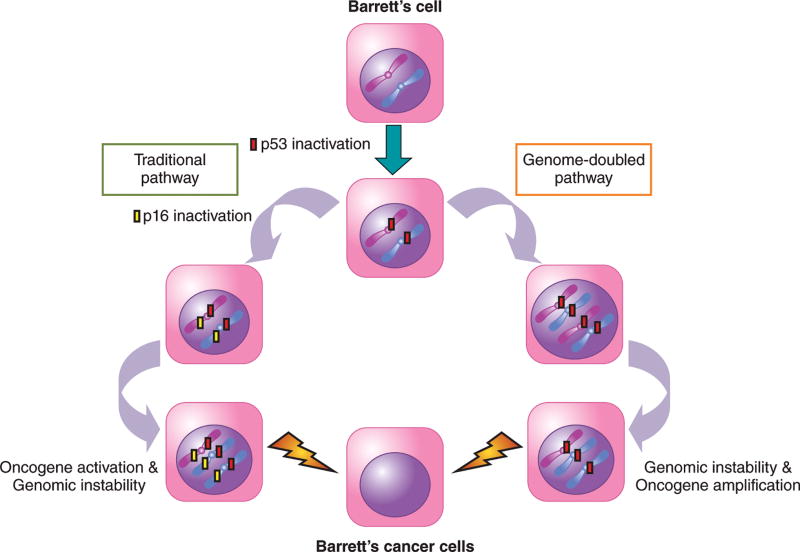Figure 2.
The “omics” (R)Evolution on Pathways of Neoplastic Progression in Barrett’s Esophagus. Metaplastic Barrett’s cells first acquire a mutation leading to inactivation of p53. The traditional pathway involves the step-wise accumulation of alterations in tumor suppressor genes such as p16, followed by oncogene activation, and genomic instability, finally resulting in cancer formation. In the genome-doubled pathway, the p53-mutant Barrett’s cells undergo whole genome doubling, followed by genomic instability and oncogene amplification, resulting in cancer formation. It has been proposed that the genome-doubled pathway may be a more rapid pathway to cancer development, and may possibly explain the failure of endoscopic surveillance to detect early cancer progression in Barrett’s esophagus.

